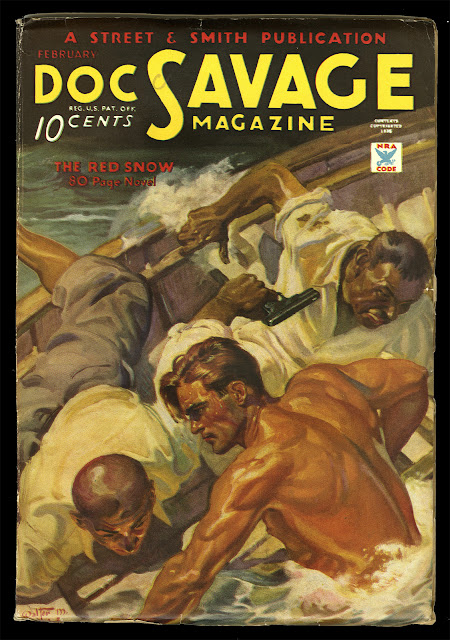June 1936 - The Haunted Ocean
The Haunted Ocean is another Laurence Donovan tale, this time with a
lofty villian's goal: Defeating all the world's armies and using his own
to enforce world peace. The US President (FDR at this time, although not
named) telephones Doc and summons him to Washington, D.C. to discuss the disappearance of the peace commission.
At the meeting, the President stated, "The whole thing is fantastic, but it suggests such great possible calamity, it cannot be overlooked! We seem to be threatened by such a power as none of our government scientists and technicians have ever before seen."
Doc replied that science had advanced so rapidly that the threat could be genuine. "None can say what vast force can be discovered at any time. Unfortunately, the discoveries are not always made by those of balanced and straightforward minds."
The villain, The Man of Peace, seeks the same ends as the commission - to disarm everyone but themselves, although this is not acceptable to the great nations.
This was an odd story and in thinking about it, I find it is so strange that the writer and editor in 1936 would not find it strange or worry that the readers would not like the commission members to be Great Britain, France, the United States, Spain, Italy, and Germany! This is only 15 years after the Great War! William Harper Littlejohn (Doc's aide Johnny) was currently the US delegate and has gone missing.
There are plenty of planes and ships and submarines involved in the action, but I didn't find it all that engaging. I'll give Donovan's tale a 7 out of 10. The pulp cover is by Walter Baumhofer, and the Bantam paperback cover is another great James Bama painting.



















































